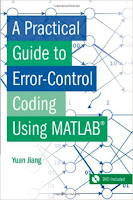Highway Bridge Superstructure Engineering: LRFD Approaches to Design and Analysis
Narendra Taly ... 963 pages - Language: English - Publisher: CRC Press; (November, 2014).
Highway Bridge Superstructure Engineering: LRFD Approaches to Design and Analysis provides a detailed discussion of traditional structural design perspectives, and serves as a state-of-the-art resource on the latest design and analysis of highway bridge superstructures. This book is applicable to highway bridges of all construction and material types, and is based on the load and resistance factor design (LRFD) philosophy. It discusses the theory of probability (with an explanation leading to the calibration process and reliability), and includes fully solved design examples of steel, reinforced and prestressed concrete bridge superstructures. It also contains step-by-step calculations for determining the distribution factors for several different types of bridge superstructures (which form the basis of load and resistance design specifications) and can be found in the AASHTO LRFD Bridge Design Specifications.
Fully Realize the Basis and Significance of LRFD Specifications- Divided into six chapters, this instructive text: Introduces bridge engineering as a discipline of structural design + Describes numerous types of highway bridge superstructures systems + Presents a detailed discussion of various types of loads that act on bridge superstructures and substructures + Discusses the methods of analyses of highway bridge superstructures + Includes a detailed discussion of reinforced and prestressed concrete bridges, and slab-steel girder bridges.
Highway Bridge Superstructure Engineering: LRFD Approaches to Design and Analysis can be used for teaching highway bridge design courses to undergraduate- and graduate-level classes, and as an excellent resource for practicing engineers.
Highway Bridge Superstructure Engineering: LRFD Approaches to Design and Analysis provides a detailed discussion of traditional structural design perspectives, and serves as a state-of-the-art resource on the latest design and analysis of highway bridge superstructures. This book is applicable to highway bridges of all construction and material types, and is based on the load and resistance factor design (LRFD) philosophy. It discusses the theory of probability (with an explanation leading to the calibration process and reliability), and includes fully solved design examples of steel, reinforced and prestressed concrete bridge superstructures. It also contains step-by-step calculations for determining the distribution factors for several different types of bridge superstructures (which form the basis of load and resistance design specifications) and can be found in the AASHTO LRFD Bridge Design Specifications.
Fully Realize the Basis and Significance of LRFD Specifications- Divided into six chapters, this instructive text: Introduces bridge engineering as a discipline of structural design + Describes numerous types of highway bridge superstructures systems + Presents a detailed discussion of various types of loads that act on bridge superstructures and substructures + Discusses the methods of analyses of highway bridge superstructures + Includes a detailed discussion of reinforced and prestressed concrete bridges, and slab-steel girder bridges.
Highway Bridge Superstructure Engineering: LRFD Approaches to Design and Analysis can be used for teaching highway bridge design courses to undergraduate- and graduate-level classes, and as an excellent resource for practicing engineers.



















